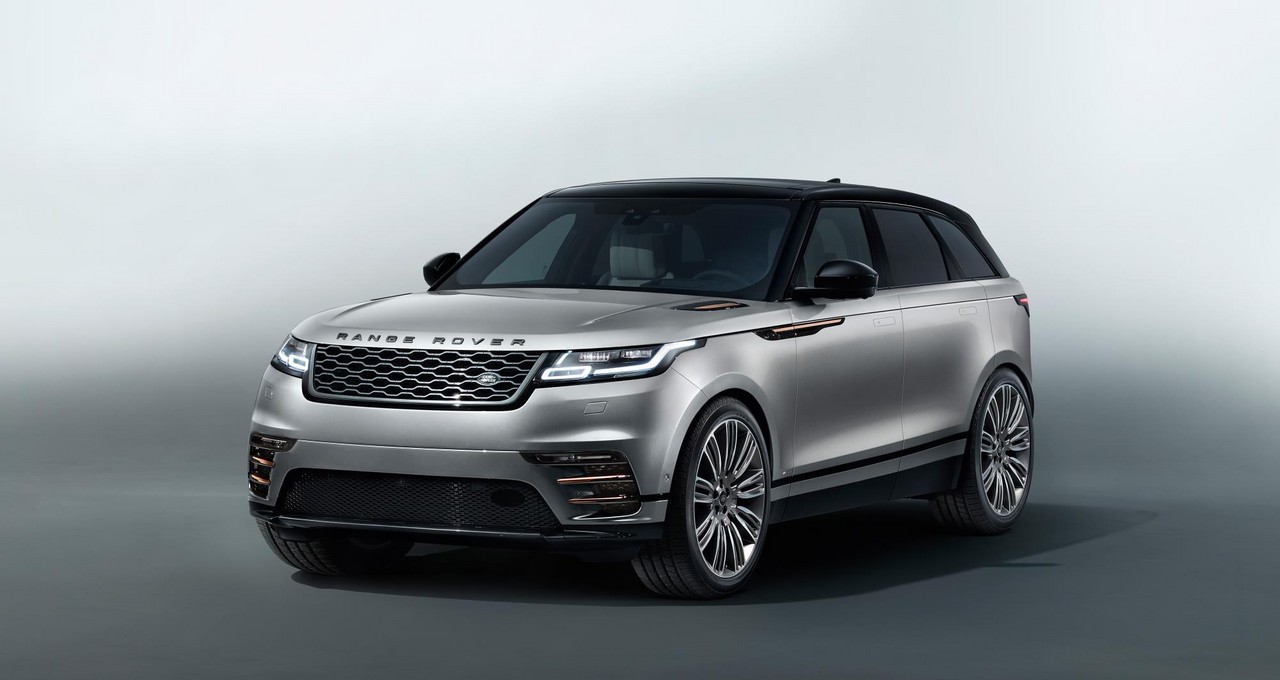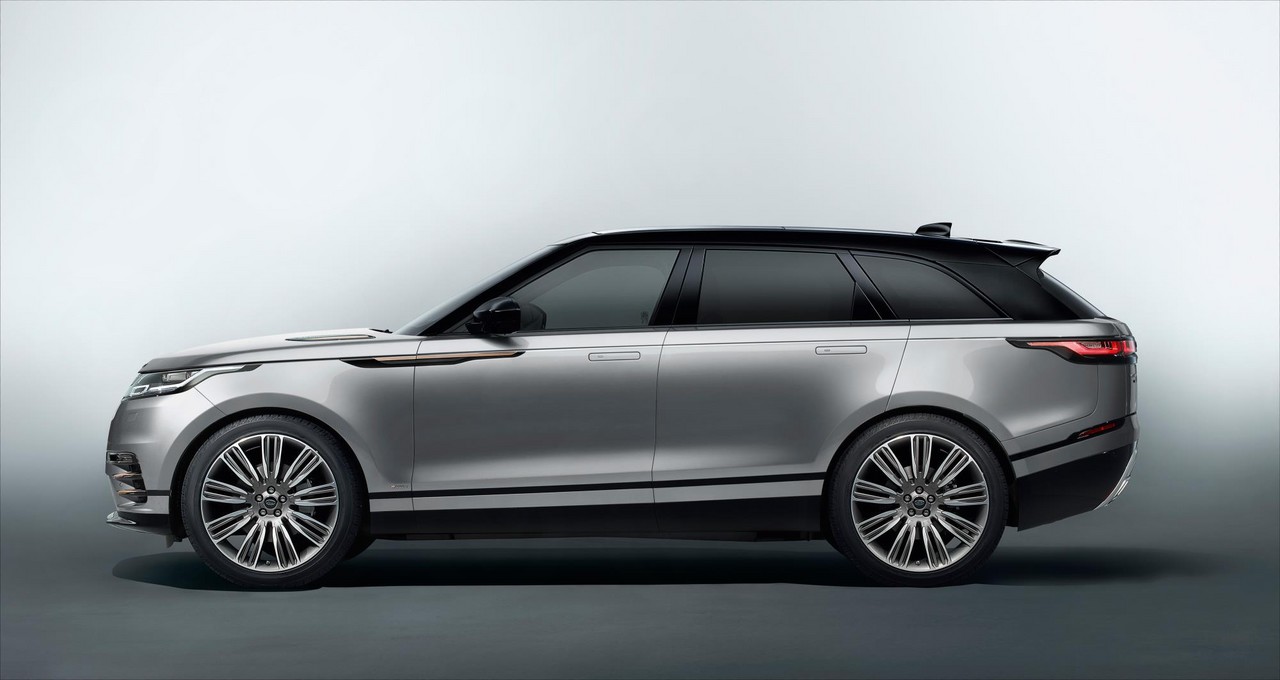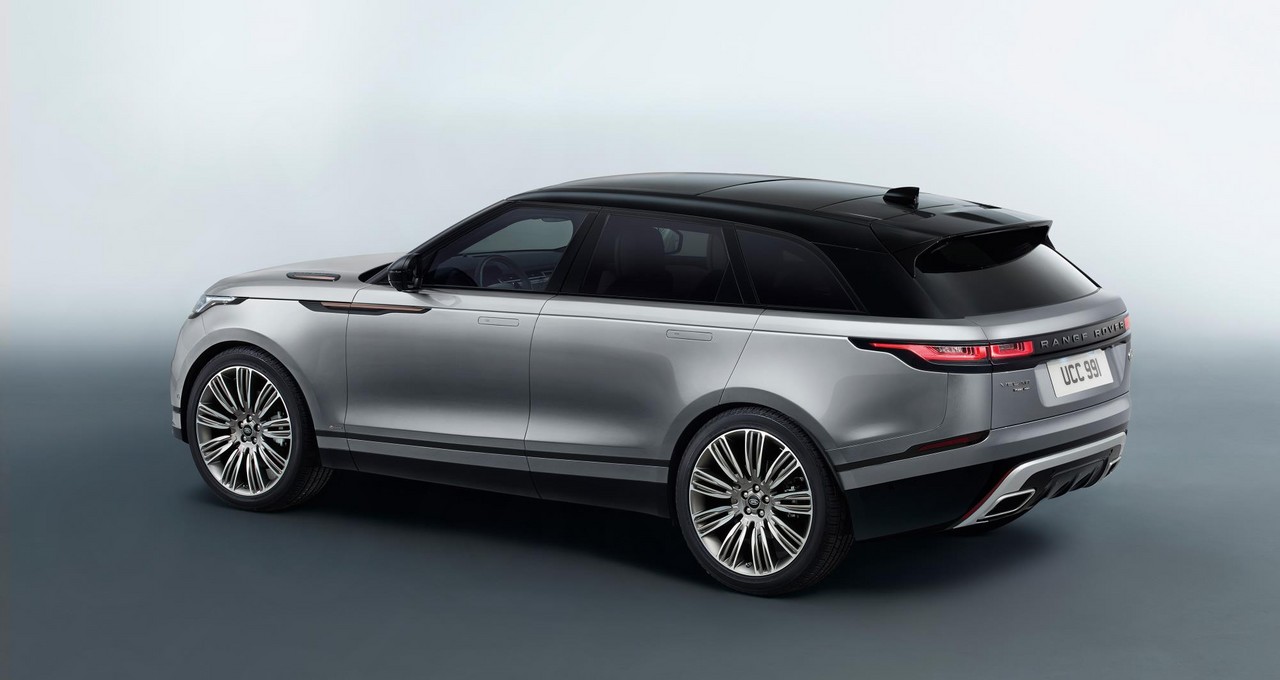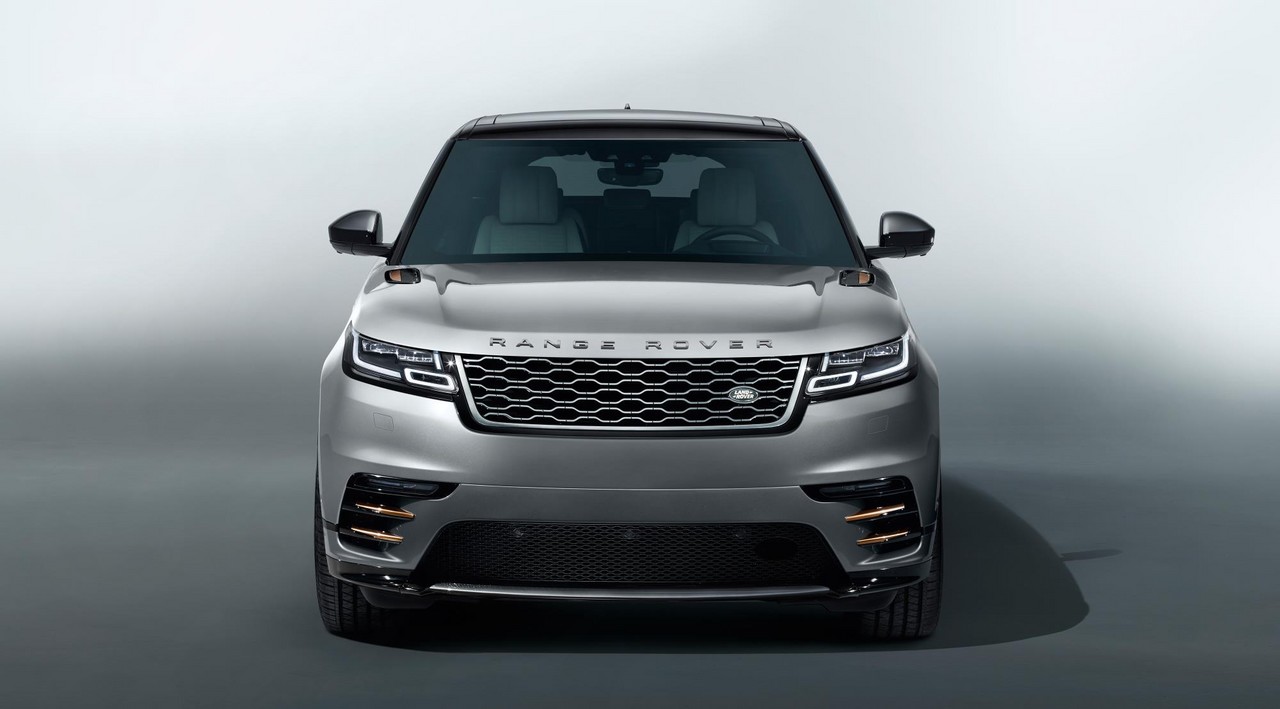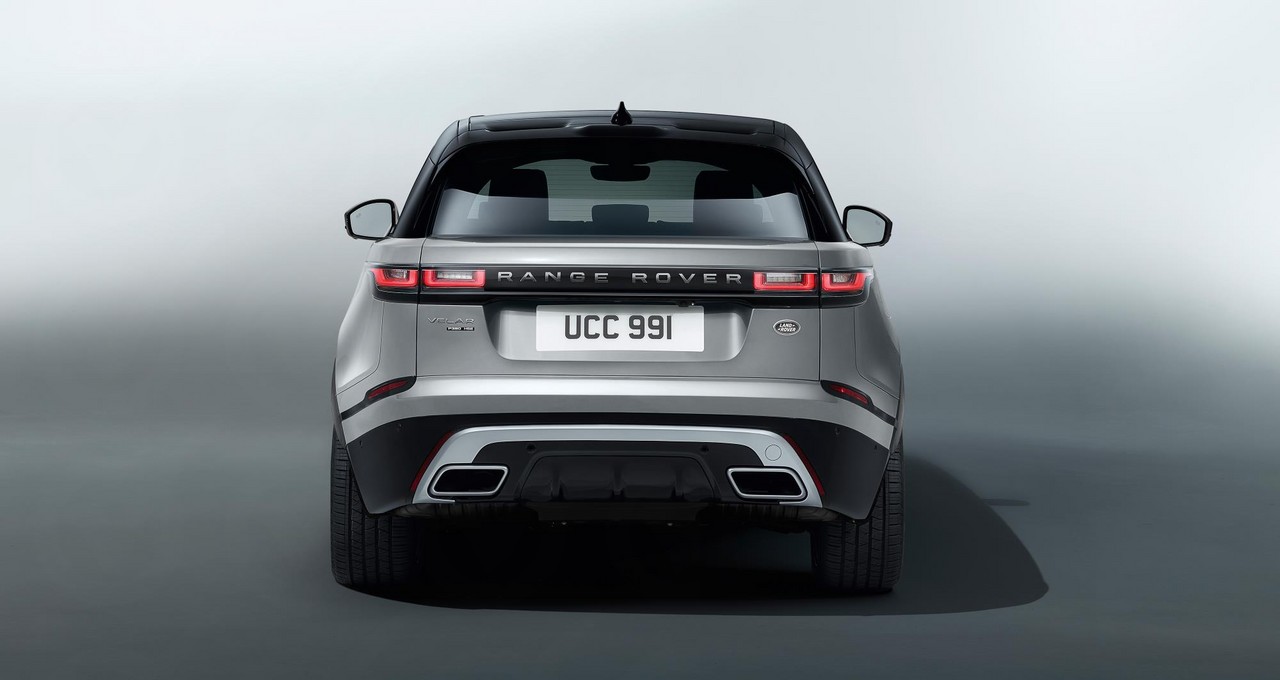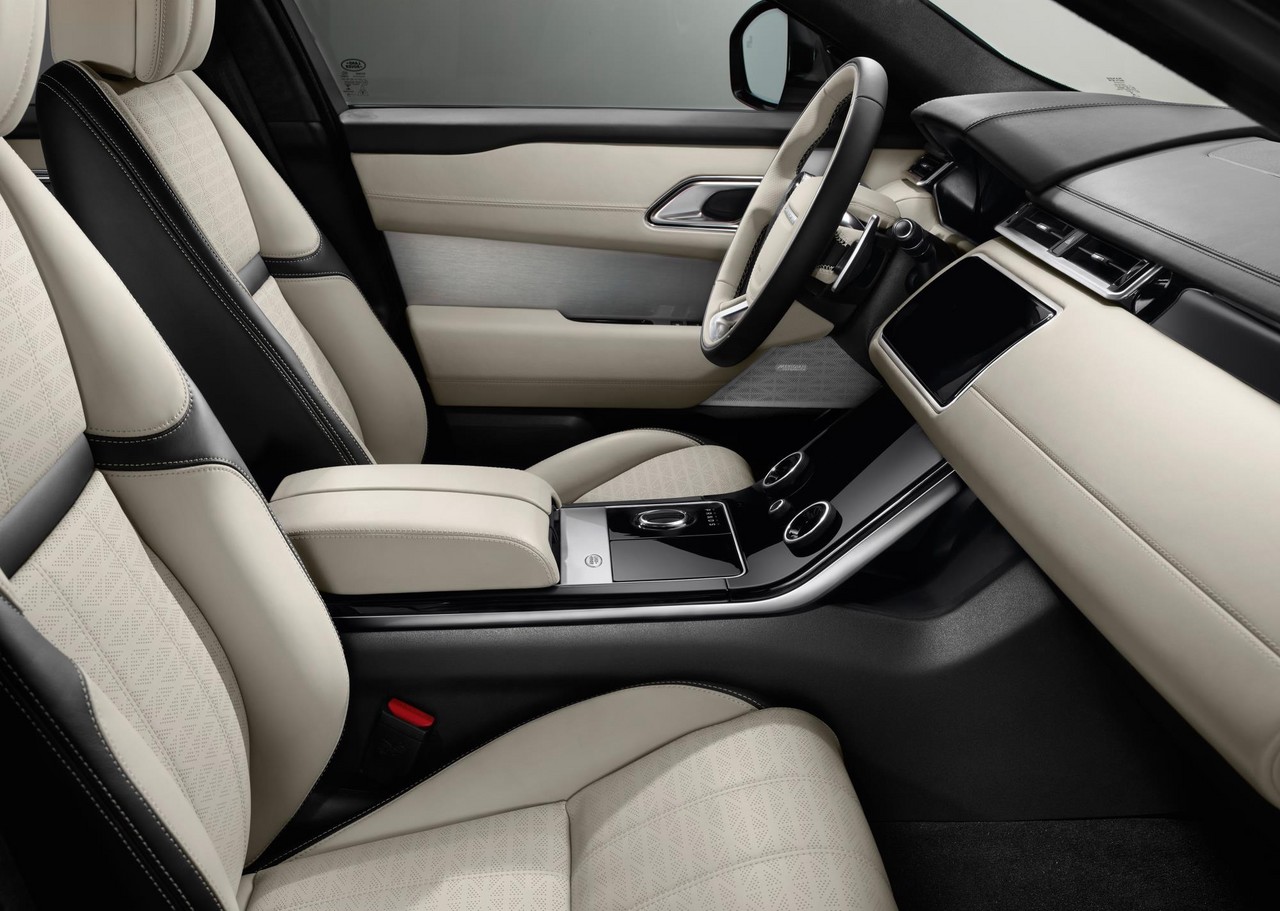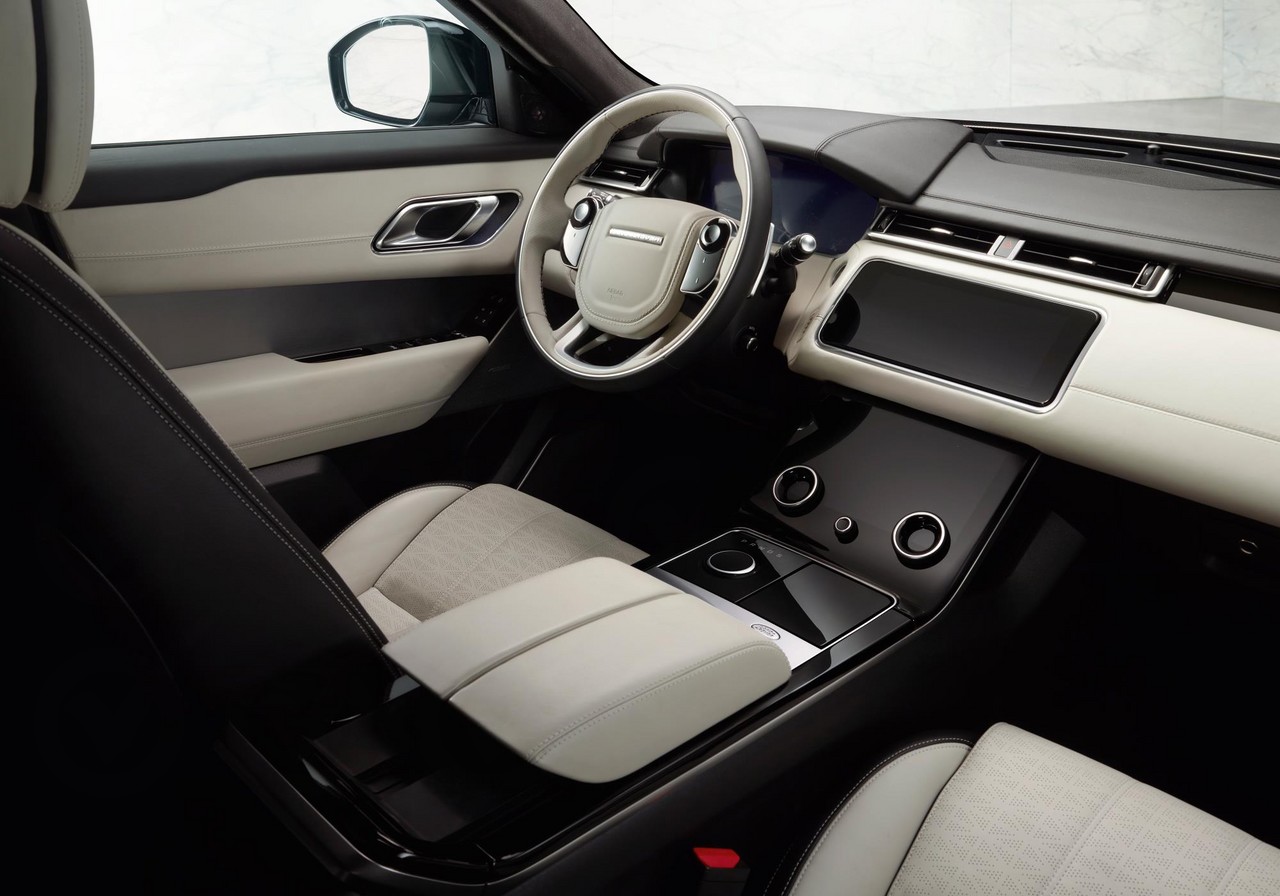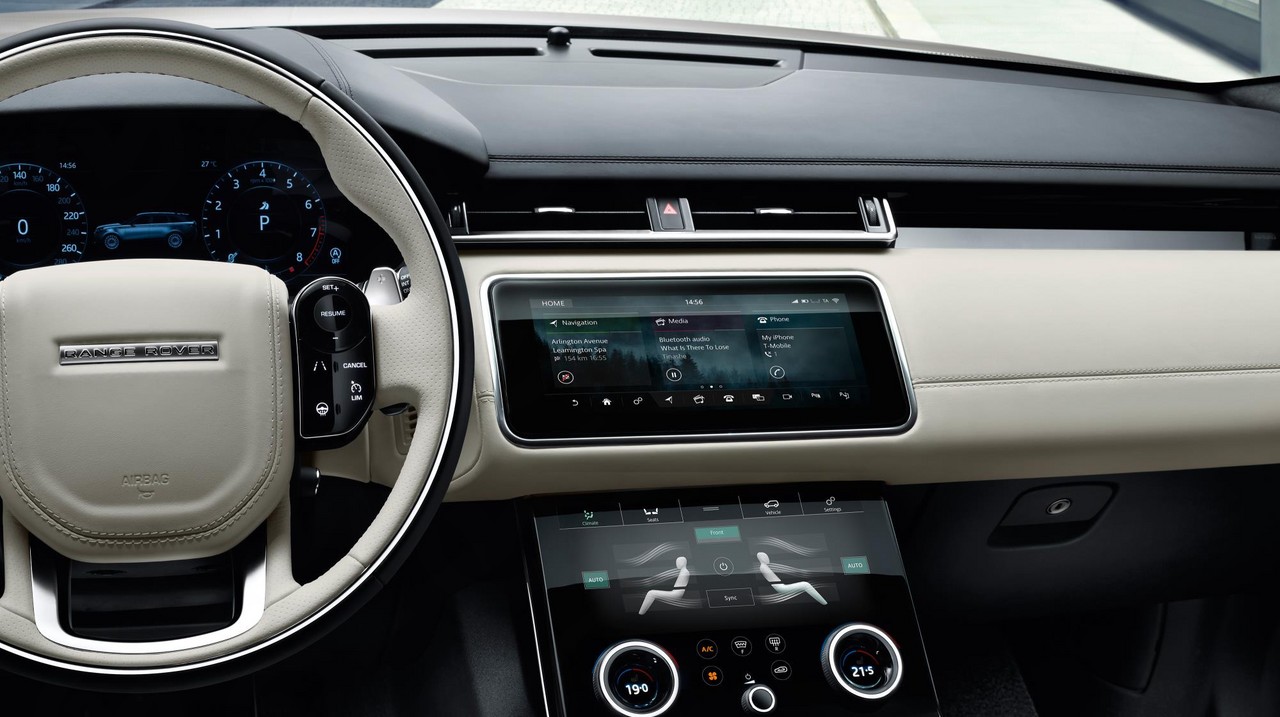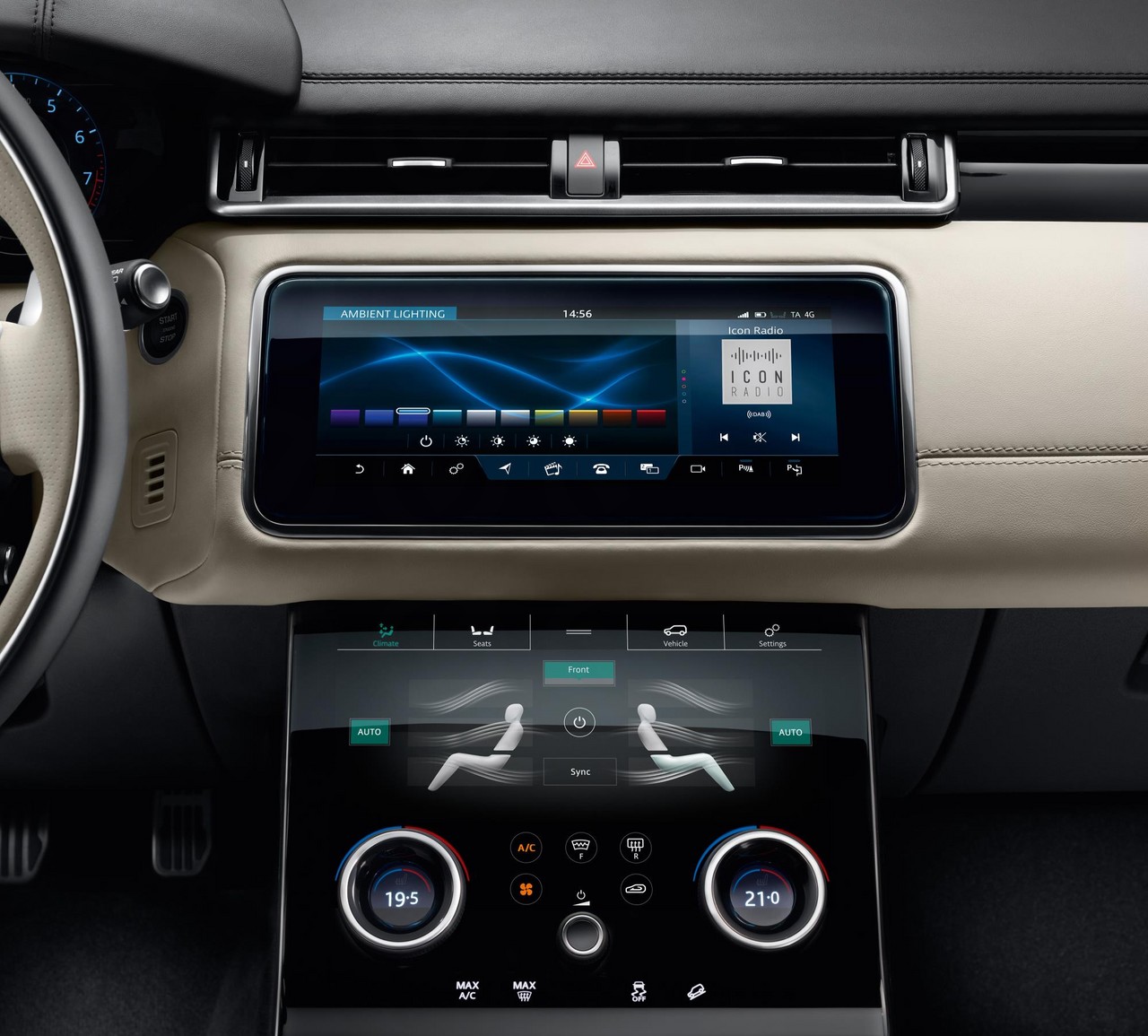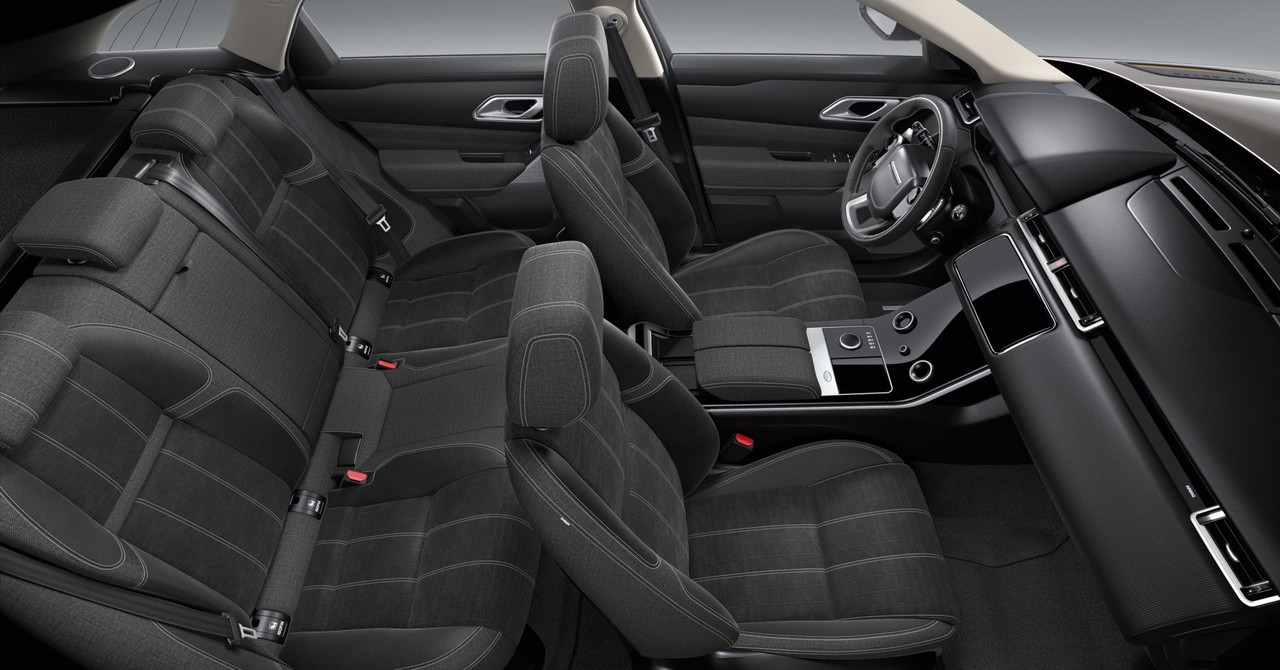
- Responsive V6 engines
- Spacious interior and boot
- Refined ZF automatic transmissions
- All-wheel drive system provides traction
- Idle noise and vibration from 2.0-litre ‘Ingenium’ diesel engine when cold
- Interior fit and finishes fall short of German rivals
Overview
The Land Rover Range Rover Velar (chassis code: L560) is a mid-size SUV that went on sale in Australia in September 2017. Positioned between the Range Rover Evoque and the Range Rover Sport , the Range Rover Velar is available in –
- Six engine-based variants: the D180, D240, D300, P250, P300 and P380;
- Standard and R-Dynamic trims. The R-Dynamic models can be identified by their deeper front bumper which has enlarged apertures for greater cooling and visual presence; and,
- Standard, S, SE and HSE editions. For the first model year, the Range Rover Velar is also available in a ‘First Edition’ specification which adds luxury features.
The Range Rover Velar is manufactured at Land Rover’s Solihull plant in the UK.
| Variant | Edition | Engine | Trans. | Peak power | Peak torque |
|---|---|---|---|---|---|
| D180 | Standard, S, SE, HSE, First Edition |
1999 cc turbo diesel I4 | 8sp auto (ZF 8HP45) |
130 kW at 4000 rpm | 430 Nm at 1500 rpm |
| D240 | Standard, S, SE, HSE, First Edition |
1999 cc biturbo diesel I4 | 8sp auto (ZF 8HP45) |
180 kW at 4000 rpm | 500 Nm at 1500 rpm |
| D300 | Standard, S, SE, HSE, First Edition |
2993 cc biturbo diesel V6 | 8sp auto (ZF 8HP70) |
220 kW at 4000 rpm | 700 Nm at 1500 rpm |
| P250 | Standard, S, SE, HSE, First Edition |
1997 cc turbo petrol I4 | 8sp auto (ZF 8HP45) |
180 kW at 5500 rpm | 365 Nm at 1200-4500 rpm |
| P300 | Standard, S, SE, HSE, First Edition |
1997 cc turbo petrol I4 | 8sp auto (ZF 8HP45) |
221 kW | 400 Nm |
| P380 | Standard, S, SE, HSE, First Edition |
2995 cc supercharged petrol V6 | 8sp auto (ZF 8HP70) |
280 kW at 6500 rpm | 450 Nm at 3500-5000 rpm |
All-wheel drive system and traction systems
The L560 Range Rover Velar has a torque on-demand all-wheel-drive (AWD) system which has a single-speed transfer case. Beyond this, the transfer case has an electronically-controlled multi-plate wet clutch and a chain drive to the front axle. While the Range Rover Velar is rear-wheel drive in normal conditions, the transfer case can fully lock in only 165 milliseconds and transient torque delivery to the front axle can be achieved in 100 milliseconds.
Torque distribution between the front and rear axles is managed by Land Rover’s ‘Intelligent Driveline Dynamics’ (IDD) control system. Using information from sensors (including steering wheel angle, throttle position, yaw rate and lateral acceleration), IDD continuously estimates the friction between the tyre contact patch, the surface and how much of the available grip is being used. IDD includes pre-emptive and reactive control strategies to optimise torque distribution, maximise traction and enhance vehicle dynamics.
For Range Rover Velar models with six-cylinder engines (i.e. the D300 and P380), an active locking rear differential is fitted as standard; this differential is optional for other Velar models.
As standard, the Range Rover Velar has a Torque Vectoring by Braking (TVB) system. If the system detects the onset of understeer during corner entry, it applies light braking force to the inside wheels – in particular the inside rear – to generate yaw and reduce understeer.
Terrain Response and Terrain Response 2
As standard, the L560 Range Rover Velar is equipped with Land Rover’s ‘Terrain Response’ system which enables the driver to select from the following drive modes: Eco, Comfort, Grass-Gravel-Snow, Mud-Ruts, Sand and, for R-Dynamic models, Dynamic. Each mode adjusts settings for the engine, transmission, all-wheel drive system, suspension, and stability control systems. As an extra-cost option (and standard on the Velar First Edition), the Range Rover Velar can be specified with the ‘Terrain Response 2’ system which can automatically select the best Terrain Response mode for any given surface.
All Terrain Progress Control, Low Traction Launch and Hill Descent Control
Available as an extra-cost option (and standard on the Velar First Edition), Land Rover’s ‘All Terrain Progress Control’ (ATPC) maintains vehicle speed so that the driver can concentrate on steering the vehicle. ATPC works in both forward and reverse gears and is operational from 3.6 km/h to 30 km/h. ATPC is activated by a button and the desired speed can be set using the cruise control switches on the steering wheel. Complementing ATPC, Hill Descent Control uses the ABS system to maintain a controlled vehicle speed on steep inclines without driver intervention. HDC also incorporates Gradient Release Control to progressively release the brakes when moving away on an incline.
The Range Rover Velar has a Low Traction Launch function that provides ‘a very progressive throttle pedal calibration’ to reduce the possibility of wheelspin. Above 30 km/h, the throttle calibration reverts back to the Terrain Response setting that was previously selected. The Low Traction Launch function is activated through the infotainment system’s lower touchscreen.
Body and dimensions
The L560 Range Rover Velar is underpinned by Jaguar Land Rover’s D7a architecture, an aluminium-intensive monocoque that is shared with the Jaguar X761 F-Pace. Key features of the Velar’s D7a body include:
- Aluminium alloys for more than 81 per cent of the body-in-white;
- 6000-series high-strength aluminium alloys for the 1.1 mm thick body panels (down from 1.5 mm);
- High-strength steels for selected rear body sections which are joined to their adjacent aluminium panels with self-piercing rivets and structural adhesive;
- An aluminium roof to lower the centre of gravity;
- High-pressure die castings for complex parts such as the front suspension turrets;
- Lightweight magnesium alloys for the front-end carrier and cross-car beam; and,
- A tailgate made from advanced composite materials.
Compared to the Jaguar X761 F-Pace , the L560 Range Rover Velar is 72 mm longer (at 4803 mm), 5 mm taller (1657 mm) and has the same 2874 mm wheelbase. Furthermore, the Range Rover Velar has a luggage capacity of 632 litres with the reduced-section spare wheel and a drag co-efficient of 0.32 Cd.
Suspension
The L560 Range Rover Velar has double wishbone front suspension which includes steel front lower control arms. Beyond this, the Velar has integral link rear suspension with forged aluminium toe links and upper control arms. As standard, the Range Rover Velar is equipped with electronically-controlled dampers (‘Adaptive Dynamics’). Sensors measure wheel movement 500 times per second, body movements 100 times per second and, in response, damping forces are continuously damped at all four corners of the vehicle
The Range Rover Velar has coil spring suspension, though Range Rover Velar models with six-cylinder engines (i.e. the D300 and P380) have air suspension as standard. The standard coil spring suspension provides ground clearance of 213 mm; for the air suspension, however, an off-road mode can be engaged at speeds below 50 km/h which increases ground clearance to 251 mm. The Range Rover Velar has a maximum wading depth of 600 mm with the coil suspension and 650 mm with the air suspension. The air suspension also decreases the ride height by 10 mm when driving at speeds over 105 km/h.
As an extra-cost option (and standard on the Velar First Edition), the Range Rover Velar can be specified ‘Configurable Dynamics’ which alters throttle response, transmission behaviour, damping forces and steering assistance.
Steering
The L560 Range Rover Velar has rack-and-pinion steering with electric power assistance and variable ratios. The steering wheel requires 2.52 turns from lock-to-lock, while the turning circle is 12.0 metres (wall-to-wall).
Safety equipment
Standard safety equipment for the L560 Range Rover Velar includes dual front airbags, front side airbags, full-length curtain airbags, ABS, electronic brake force distribution, brake assist, electronic stability control, traction control and front seatbelts with pre-tensioners and load limiters.
Fitted as standard, the Range Rover Velar has a stereo camera – mounted behind the front windscreen – which provides a 3D view of the road up to 100 metres ahead. At speeds up to 80 km/h, the Autonomous Emergency Braking (AEB) system can use this information to detect if a collision is imminent and, if so,
- Pre-charges the braking system;
- Warns the driver via a visual warning in the instrument cluster (and head-up display where fitted); and,
- If the driver fails to respond, initiates emergency braking to avoid or mitigate a collision.
As standard, the Range Rover Velar is fitted with a Lane Departure Warning (LDW) system which monitors the vehicle’s position relative to lane markings. If the system detects that the driver cross those lane markings without indicating, the driver receives a visual warning in the instrument panel and haptic warning the form of steering wheel vibrations.
Beyond this, the Range Rover Velar SE adds:
- Blind Spot Monitor: uses sensors to detect fast-moving vehicles within 70 metres and alerts the driver. As a vehicle approaches the blind spot, an icon flashes in the side mirror as a warning. Once the vehicle enters the blind spot, the icon remains illuminated;
- Driver Condition Monitoring: monitors steering inputs, throttle and brake application and analyses lane departure and the driver’s use of direction indicators for signs of fatigue. If detected, the system provides multi-stage warnings in the instrument panel recommending the driver take a break; and,
- Reverse Traffic Detection: uses a 24 GHz radar to detect approaching vehicles that may cross the driver’s path as they are reversing. If detected, an orange warning symbol illuminates in the door mirrors to alert the driver to any potential danger.
Beyond this, the Range Rover HSE and First Edition are also equipped with –
- Adaptive Cruise Control (ACC) with Queue Assist: ACC uses a long-range 77 GHz radar to maintain a set cruising speed and a safe distance from the vehicle ahead with automated braking. The system can brake the vehicle until it is stationary and, if the driver then presses the accelerator, the Queue Assist function enables the Velar to accelerate and track the vehicle in front;
- Lane Keep Assist (LKA): can return the vehicle to the centre of its lane by applying a small amount of counter-steering through the steering system. However, this steering torque can be over-ridden by the driver; and,
- Blind Spot Assist (BSA): enhances the existing Blind Spot Monitor system by using the collision warning system in conjunction with the electric power steering system. If the driver is changing lanes and BSA detects that a vehicle is in the driver’s blind spot or approaching the blind spot, a gentle steering force is applied to keep the vehicle in its lane.
Euro NCAP testing
In Euro NCAP testing , the Range Rover Velar received a five star safety rating which included a 93 per cent adult occupant protection rating and an 85 per cent child occupant protection rating. In the frontal offset test, protection of the front occupants was generally rated as good, though chest and lower left leg protection for the driver was rated as adequate (i.e. a slight risk of serious injury). In the side impact and pole tests, driver protection was rated as good in all areas.
Features: Range Rover Velar and R-Dynamic
As standard, the Range Rover Velar is equipped with a ‘Touch Pro Duo’ infotainment system which featured two 10-inch high-definition touchscreens, an Intel quad core processor, a 60GB solid-state drive, Ethernet network and micro SIM 4G connectivity. Accessible through the Touch Pro Duo system, ‘InControl Apps’ enables owners to access compatible apps from iOS and Android devices using the system’s upper touchscreen. The infotainment system also included Bluetooth mobile phone connectivity and audio streaming, voice control and two USB inputs.
Standard features for the Range Rover Velar included 18-inch alloy wheels with all-season tyres, a 250 watt Land Rover Sound System with eight speakers, dual-zone climate control air conditioning, cruise control with speed limiter, Luxtec and suedecloth seat trim, LED headlights, rear fog lights, dusk-sensing headlights, rain-sensing wipers, rear parking sensors and rear view camera, a leather steering wheel with black gearshift paddles, 40:20:40 split fold rear seats, remote central locking with proximity key, power adjustable and heated door mirrors, power windows, a height and reach adjustable steering wheel, an auto-dimming interior rear view mirror, illuminated vanity mirrors, Morzine headlining, three 12 volt power sockets, powered gesture tailgate, a luggage cover, tyre pressure monitoring, a trip computer, an alarm and an immobiliser.
The Range Rover Velar R-Dynamic models can be identified by their unique front bumper with larger air apertures, front fog lights, unique rear bumper with integrated exhaust finishers, gloss black door mirrors with Narvik Black scalps. Inside, the Velar R-Dynamic featured satin chrome gearshift paddles, R-Dynamic treadplates, ‘Shadow Aluminium’ trim finisher, bright metal pedals and Ebony Morzine headlining.
Features: Range Rover Velar S
Compared to the standard Range Rover Velar, the Velar S is further equipped with 19-inch five-spoke alloy wheels, a 380 watt Meridian Sound System with eleven speakers, perforated grained leather seats, a ten-way power adjustable front seats with driver’s seat memory settings, premium LED headlights with signature daytime running lights, power folding door mirrors with auto-dimming function and approach lights.
Features: Range Rover Velar SE
Relative to the Velar S, the Velar SE adds 20-inch alloy wheels, an 825 watt Meridian Surround Sound System with seventeen speakers, Matrix LED headlights and a 12.3-inch Interactive Driver Display (in place of the analogue instruments). The Range Rover Velar SE, HSE and First Edition are also equipped with a 360 degree Parking Aid which uses cameras around the car to generate a bird’s eye view of the vehicle which is shown on the touchscreen. The touchscreen can depict nearby objects and provide audible warnings to indicate the proximity of obstacles.
Features: Range Rover Velar HSE
The Range Rover Velar HSE is distinguished by its 21-inch alloy wheels, perforated Windsor leather seats, twenty-way power adjustable front seats with ventilation memory settings, a power adjustable steering wheel, satin chrome gearshift paddles and extended Windsor leather upholstery.
Features: Range Rover Velar First Edition
The Range Rover Velar is only available for the first model year of the Velar’s production. Based on the HSE edition, the Velar First Edition is differentiated by its 22-inch nine split-spoke alloy wheels with a diamond turned finish, a 1600 watt Meridian Signature Sound System with twenty-three (23) speakers, front seats with massage function, perforated Windsor leather seat upholstery, heated and reclining rear seats, Matrix-Laser LED headlights (which have a high-beam range of 550 metres), head-up display, ‘Activity Key’, a heated steering wheel, suedecloth headlining, illuminated R-Dynamic treadplates, premium carpet mats, configurable ambient interior lighting, rear privacy glass and a sliding panoramic roof. In addition to All Terrain Progress Control, Terrain Response 2, Configurable Dynamics and an Active Rear Locking Differential, the Velar First Edition has a ‘Wade Sensing’ feature that uses sensors in the door mirrors to measure the water level and warn the driver as it rises.
Visually, the Velar First edition can be identified by its ‘First Edition’ badging on the B-pillar and black contrast roof.
Brochure and specifications
- Brochure: Land Rover Range Rover Velar (March 2017)
- Specifications: Land Rover Range Rover Velar (May 2017)
